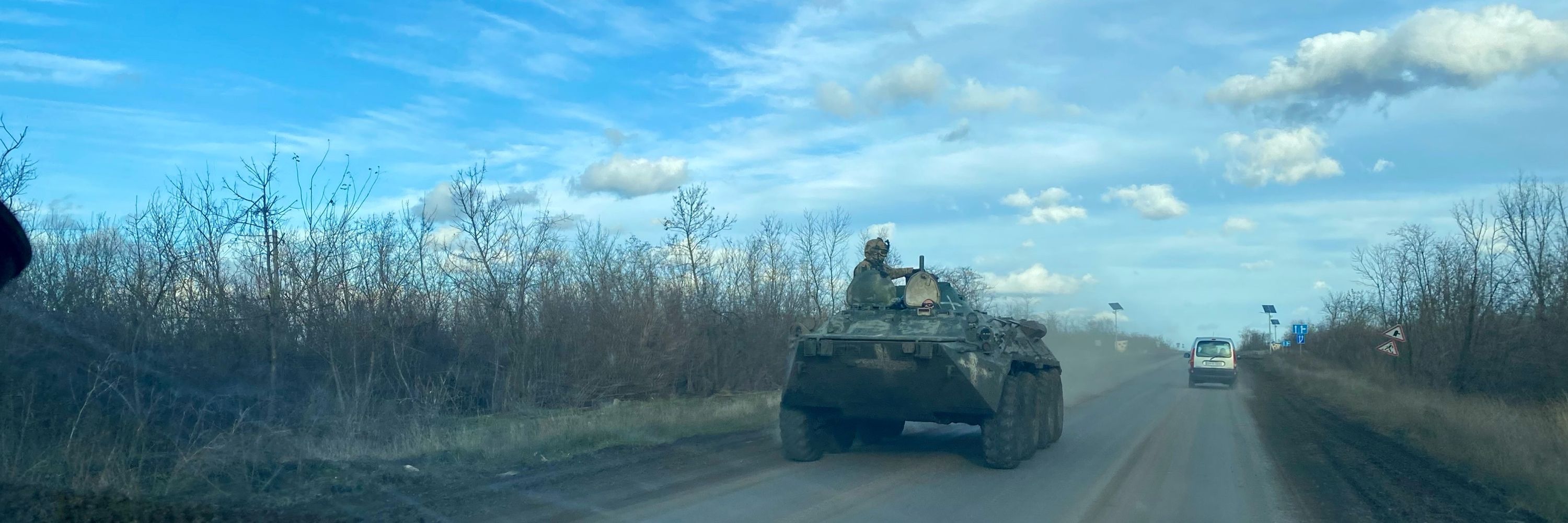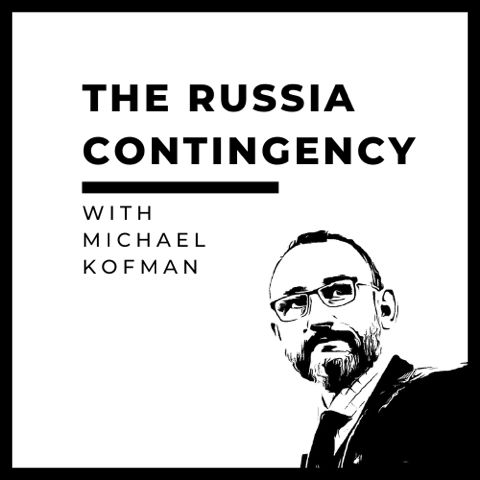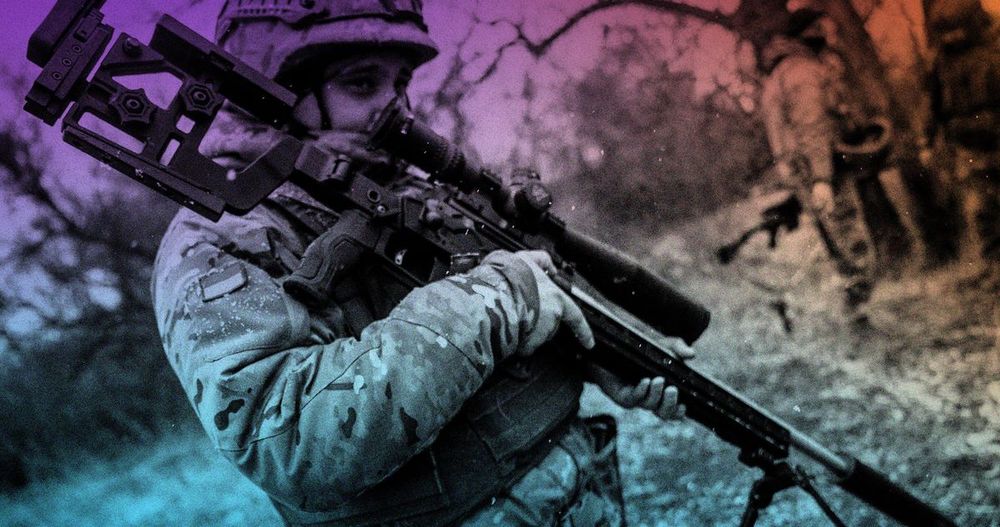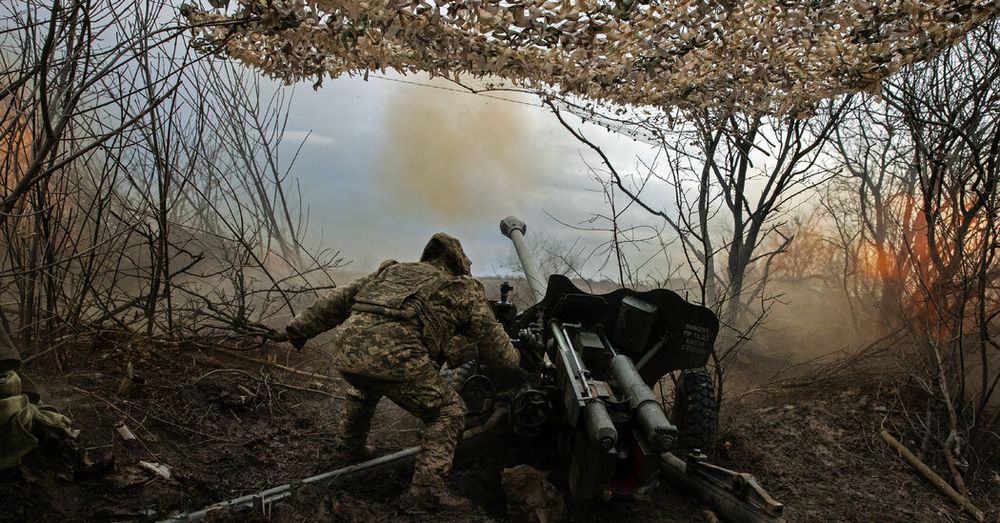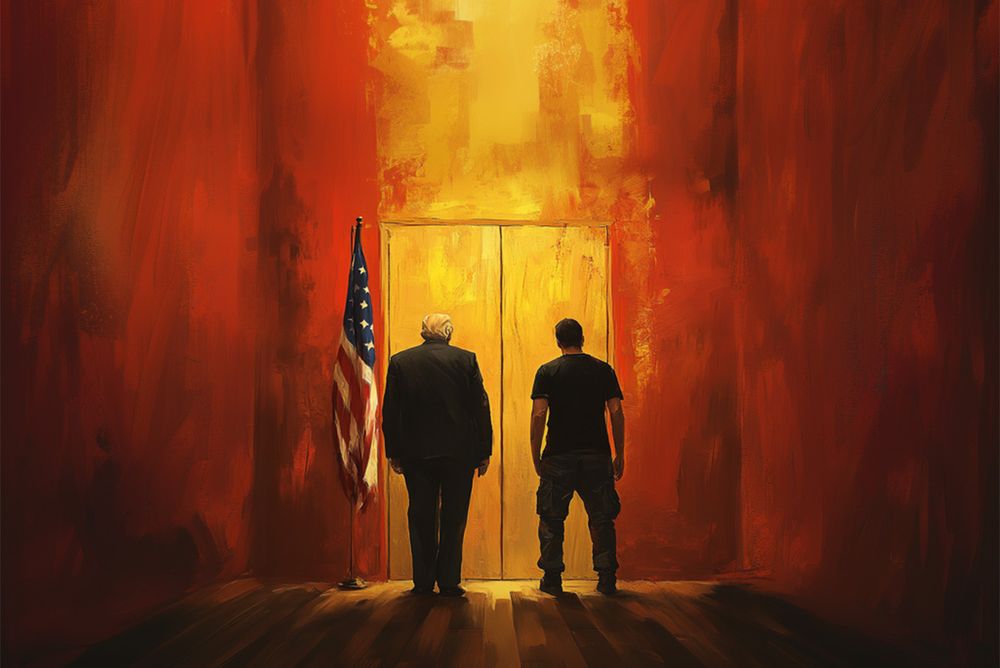Michael Kofman
Senior Fellow, Carnegie Endowment. Defense analysis with a focus on the Russian and Ukrainian militaries.
- Part 2 of my discussion with @shashj.bsky.social is out. Come for mass precision and maneuver warfare, stay for observations from the war relevant to European force planning and defense contingencies. @WarOnTheRocks warontherocks.com/episode/ther...
- Latest Russia Contingency is out. @shashj.bsky.social joins me and we switch roles. This time he asks the questions as we dive into observations and lessons from the war. @WarOnTheRocks warontherocks.com/episode/ther...
- Interesting piece. www.iiss.org/online-analy...
- Good conversation with @benjaminhart.bsky.social nymag.com/intelligence...
- [Not loaded yet]
- Congrats
- Part two of the latest Russia Contingency episode is out. Rob Lee and I talk tactics, tech, and innovation, updating our views based on the last field trip. @warontherocks.bsky.social warontherocks.com/episode/ther...
- Weekend long read. There’s quite a bit in here. www.nytimes.com/interactive/...
- An update on the war following a recent trip. The situation has improved compared with Fall 2024. Russian offensive momentum slowed significantly over the winter, though it is premature to claim that the front has stabilized, especially following AFU withdrawal in Kursk. /1
-
View full threadUkraine still has a chance to stabilize the front, if positive trends are sustained, manpower and force management issues addressed. UA and the West have to plan around the prospect that no ceasefire is imminent, or that in any case it will not lead to a durable peace. 28/
- For a previous thread on this subject from January see: bsky.app/profile/mich...
- Though it is too early to assess if Ukraine is on track to stabilize the front, or if this is an intervening period, and Russian offensive intensity will resume later this spring, and into the summer. 26/
- The front line is not about to collapse. Despite AFU being largely pressed out of Kursk, the overall situation from Pokrovsk to Kupyansk improved. The implication being that Ukraine is not in a desperate situation requiring a rushed ceasefire under unfavorable terms. 27/
- RF has been dealing with a degree of materiel exhaustion after high loss rates in the fall, but current RF contract rates continue to provide replacements and enable rotations. RF recruitment went up considerably in the second half of 2024. 24/
- The bottom line is that despite the observed accelerated gains in the fall, the Russian military is visibly underperforming relative to its materiel advantages, and those gains were made at very high cost. 25/
- Over the course of 2023-2024 Russian forces had adapted emphasizing assault groups and detachments, essentially ‘majoring in the minors.’ These tactics yielded incremental gains, grinding through the front, but do not lead to operationally significant breakthroughs. 22/
- For more on Russian military adaptation, assault groups, and why Russian forces ended up fighting the way they have been, you can check out this much longer report from 2024: 23/ carnegieendowment.org/research/202...
- I retain an overall mixed view of the Kursk offensive, and think it would have been best as a 1-2 week raid. That said, it also could have also gone a lot worse than it did. It was gamble that yielded initial tactical success, but ultimately didn’t pay off in my view. 20/
- Russian forces continue to suffer from low force quality, but also a general inability to overcome prepared defenses, backed by mass precision. The scale of attack, whether infantry, lightly motorized, or mechanized is typically insufficient to break through AFU positions. 21/
- Given the character of the fighting, territory changing hands is a lagging indicator for what’s happening between the two forces. Consequently, ‘gradually then suddenly’ transitions are going to be common when a set of positions become unsustainable. 18/
- In my view holding Kursk wasn’t doing much for Ukraine at this point. Trading it for something seemed an unlikely proposition. The offensive did not lead to a change in the overall dynamic in the war, or a large shift of RF forces from Pokrovsk/Kurakhove axes. 19/
- DPRK assaults pressured Ukrainian lines, but the core problem was logistics as Russian fiber-optic FPV drones increasingly interdicted resupply routes. That said, AFU withdrew without major personnel losses, and the retrograde looked somewhat better than Avdiivka. 16/
- Unfortunately, there will be significant equipment losses due to the withdrawal, and the vehicle loss ratio is going to at best be 1:1 over the course of the operation. But there was no mass encirclement at Kursk. I know most folks understand this, but it merits repeating. 17/
- In recent months Russian forces have not advanced significantly near Pokrovsk, Chasiv Yar, Kupyansk. Much of the Russian progress has been around Velyka Novosilka, Kurakhove, and Kursk. However, in Kursk AFU has been forced to withdraw from most of the territory held. /14
- Recent Russian advances in Kursk were taking place well before the suspension of US military assistance/intelligence. The battlefield geometry of a salient was inherently unfavorable. Russian forces chipped away at Kursk until they could interdict the few resupply routes. /15
- A structural deficit of manpower continues to be Ukraine’s leading problem. Mobilization remains insufficient to address these challenges & the sizable absent without leave (AWOL) problem. The amnesty law has led some to return to units, but AWOLs continue to sap the force. /12
- Ukraine has thankfully suspended creating new brigades, reversing what was one of the more puzzling force management choices in 2024. And there is progress being made to stand up new Corps formations, which are closer to divisions, based on the AFU’s best brigades. /13
- The recent appointments of a new commanders, especially Drapatyi taking over both Land Forces and OSUV Khortytsia, has had positive effect on the morale of subordinate units. In May 2024 Drapatyi took over defense of Kharkiv on the second day, stabilizing the situation. /10
- Training reform is finally being tackled, and there are prospects for change under the new Land Forces commander, improving the quality of training, facilities, updating the content, replacing instructors, and tying training to actual combat needs. /11
- Ukraine is now making much of what it needs for day-to-day combat needs, from mines to drones. But, it remains dependent on the West for long precision strike (GMLRS), interceptors for air defense systems, parts/maintenance, and other non-materiel forms of support. 8/
- Ukraine received significant amounts of arty ammunition and equipment over the winter, and increased its own production of drones. Across much of the front there is relative parity in artillery fires and strike drones with some asymmetries in specific categories of systems. 9/
- Drones are responsible for ~60% (high confidence over 50%) of the daily RF casualties at this point, and are the principal means of stopping attacks in combination with mining, and traditional artillery. Better integration has led to a more systemic approach at the tactical level. 6/
- Drones continue to expand their role as counters to other types of drones. There is a growing role for UGVs in logistical roles, and as part of breaching operations. Actual automation is slowly coming along with terminal guidance, uncrewed turrets, etc. 7/
- AFU is successfully attriting Russian forces at 0-30km through a combination of mining, drones, and traditional fires. This enables a low density of forces to hold the front. Russian units often don’t reach defensive positions and much of the equipment is lost in assaults. 4/
- Ukraine invested in this approach last year by significantly expanding drone units such as Birds of Madyar, Lasar Group, Achilles, etc. It also invested in scaling up mine and drone production. Drone formations are the primary stabilizing factor along the front right now. 5/
- Russian advances were stalled for three reasons: materiel exhaustion from losses in the fall, effective Ukrainian adaptation to how Russian forces were prosecuting offensive operations, and winter weather conditions which affected the pace of operations. 2/
- This dynamic may not hold as we get further into the spring. Russian forces appear to be regrouping for renewed offensive operations. Ukrainian forces have improved tactically at countering how RF fight, employing UAS to compensate for a deficit of manpower at the front. 3/
- Latest Russia Contingency is out. Rob Lee joins me for a discussion on the situation in Kursk, state of the front, tech innovation, and tactical adaptation. @WarOnTheRocks warontherocks.com/episode/ther...
- Regarding Kursk. AFU is still withdrawing. I expect there will be equipment left behind, but there is no evidence of a mass encirclement.
- In Kursk, the main problem was RF interdiction of the few supply routes available, with one main road into Sudzha. As the Kursk pocket got squeezed it became increasingly unsustainable. These issues have been discussed for a long time.
- Although it may have temporarily exacerbated the situation, the most recent Russian advances in Kursk were taking place well before the suspension of US military assistance/intelligence. The problem was battlefield geometry, logistics, and constant assaults by DPRK.
- [Not loaded yet]
- [Not loaded yet]
- Worth looking into, but I've not heard of a dramatic change in efficacy of UMPK strikes, nor is there evidence of a new remarkable EW system being used across the front that is qualitatively different from what has previously been employed.
- Latest WOTR episode is out. I join @constelz.bsky.social Justin Logan, Melinda Haring & @ryanevans.bsky.social to discuss last week’s events, US cut off of support, the growing rift with Ukraine & Europeans, and prospects for fixing it. @WarOnTheRocks warontherocks.com/2025/03/can-...
- [Not loaded yet]
- Please read the whole thread rather than replying to the first post.
- Much depends on the extent Ukraine has been stockpiling munitions/parts and where Europeans can step in, although in some cases they have low inventories, and in others U.S. retains the ability to deny any transfers. The impact will probably be much more visible in a few months. 7/
- Finally, if it is just halt to further shipments of munitions/equipment then the effect will be in specific categories of capability, but if all forms of U.S. support are suspended then it is more difficult to assess the systemic impact, and follow on ripple effects.
- The issue becomes more problematic when looking at long-range precision strike beyond 30km, here systems like GMLRS are still quite relevant, and interceptors for US provided advanced air defense/missile defense . The impact will be pronounced over time. 5/
- Another important area is maintenance, parts, and technical support. Suspension will result in degradation of operational readiness over time. It’s also unclear if the cutoff involves intelligence support, training, and other forms of indirect support. 6/
- Traditional artillery fires are less relevant at the moment, and there is a relative parity between the two sides. In combination with munitions recently delivered by the U.S. in recent months, which frontloaded supplies, Europeans could sustain Ukraine through this year. 3/
- However, Ukraine is likely to begin metering fire rates at this point given the uncertainty and therefore Russia will reestablish some degree of fires advantage, but this is no longer decisive, given more than 50% of casualties are inflicted by drones of various types. 4/
- Ukraine’s current approach to defensive operations combines mines, strike drones, and traditional artillery fires to attrit Russian forces at 0-30km. Most of the casualties are now inflicted with mines, and drones, which are produced in Ukraine. 2/
